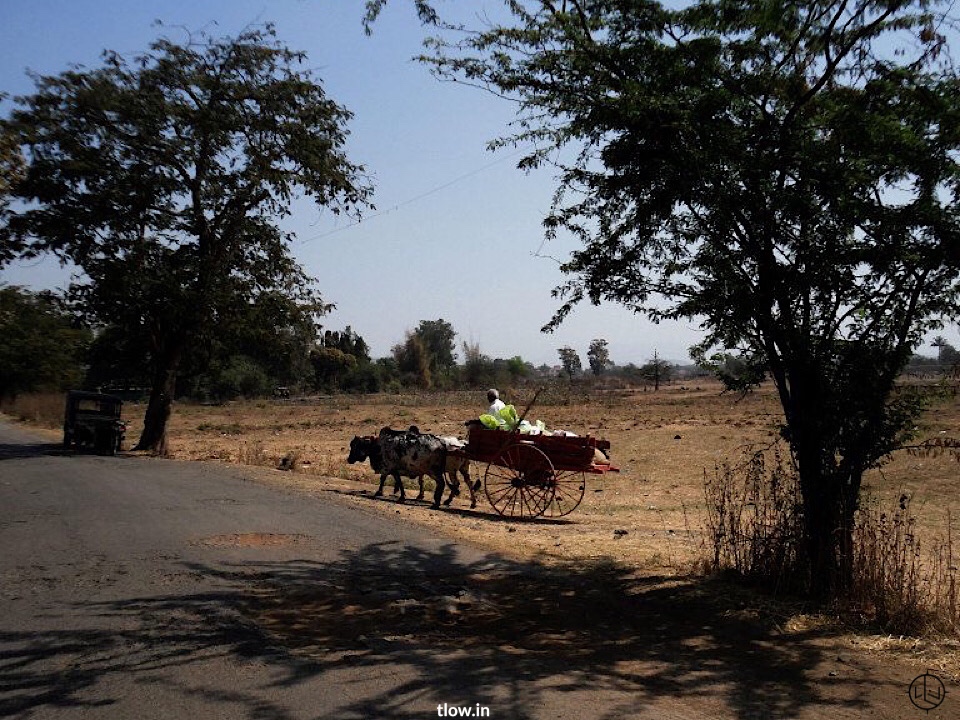
A sulphur spring and a temple modelled on a fort: Vajreshwari, Maharashtra
The town of Vajreshwari lies on the banks of the river Tansa, in Thane district of Maharashtra. Vajreshwari is located at a distance of 75 km from Mumbai. This town is famous for the Hindu temple of Shree Vajreshwari Yogini Devi Mandir, which is dedicated to the Goddess Vajreshwari. The town was earlier known as Vadvali, but was renamed Vajreshwari, later in honour of the presiding deity of the temple.
Vajreshwari
There are multiple ways of getting to the holi town. The nearest railway station to Vajreshwari from the Eastern suburbs of Mumbai is Thane which is at a distance of 34 km from the town. The nearest railway station from the Western suburbs is Vasai Road which is 31 km from the town. Many buses ply regularly from Thane and Vasai Road station. Maharashtra State Transport organises special bus services on holidays and special festivals from these two stations. The train plus bus option is the most economical way of getting to this holy town.

The other available option is to drive to Varjeshwari, which is hassle free and the fastest way of getting to this town. People driving from Mumbai’s Eastern suburbs can take the Eastern Express Highway – Mulund check naka – Nasik road – Bhiwandi bypass toll – Bhiwandi junction – Vajreshwari route.
While driving from the Western take the Western Express Highway – Dahisar check naka – National Highway No. 8 to Shirsad – State Highway – Vajreshwari route.

The Shree Vajreshwari Yogini Devi Mandir is located near the town post office, on the Mandagiri hillock, which was formed out of a volcanic eruption and is surrounded by hills on all sides.
Legend has it that goddess Vajreshwari appeared in a dream to Chimaji Appa, who was the young, military commander of Peshwa Baji Rao I and told him how to conquer Bassein Fort in Vasai.

To fulfill the vow taken in front of goddess Vajreshwari and to celebrate his victory Chimnaji Appa ordered the governor to build the Vajreshwari temple. The temple’s architecture is modeled on Bassein Fort.
The temple is surrounded by a stone wall just like a fort is. The main gate entrance has a drum house which is very similar to the Bassein Fort entrance. Fifty-two stone steps have to be climbed to reach the main shrine. A golden tortoise is carved on one of the steps and worshipped as Kurma, the tortoise incarnation of Vishnu, the second person of the Hindu trinity.

In the month of Chaitra (mid-March which is the first month of the Hindu calendar), a huge fair in honor of goddess Vajreshwari is held on Amavasya (new moon day). The fair commences on the 14th day of fortnight of the waning moon of the month with ceremonial worship of the goddess. On Amavasya at night, lamps are worshipped.
The other major attraction is the hot springs, which are located at a radius of 5 km from the temple. According to locals, the hot springs is the blood of demons that were slain by Goddess Vajreshwari. Pilgrims who visit the temple take a holy bath in the springs.

The hot springs that is near the main temple attracts a lot of crowd. Around the springs there is plenty of make-shift accommodation and many of the stalls sell and rent short pants and water mugs to the pilgrims who wish to take a dip in the springs. There are plenty of food stalls and sugarcane juice centers near these springs.
The accommodation near the springs is very basic with just a bed, a make-shift roof above and open from all sides. This is the preferred options for men and youngsters. There are plenty of guest houses on the road near the temple that cater to the need of all kinds of travellers.

Vajreshwari is a good place to visit all through the year and it is a perfect place to visit not only for pilgrims but also for anyone looking for a hot dip in a natural sulphur spring.
For a similar experience, >>click here











The best blog that there is on the internet
A hot bath very close to mumbai
Hi webmaster, thnxx for providing this unique post. I found it brilliant. Take care,